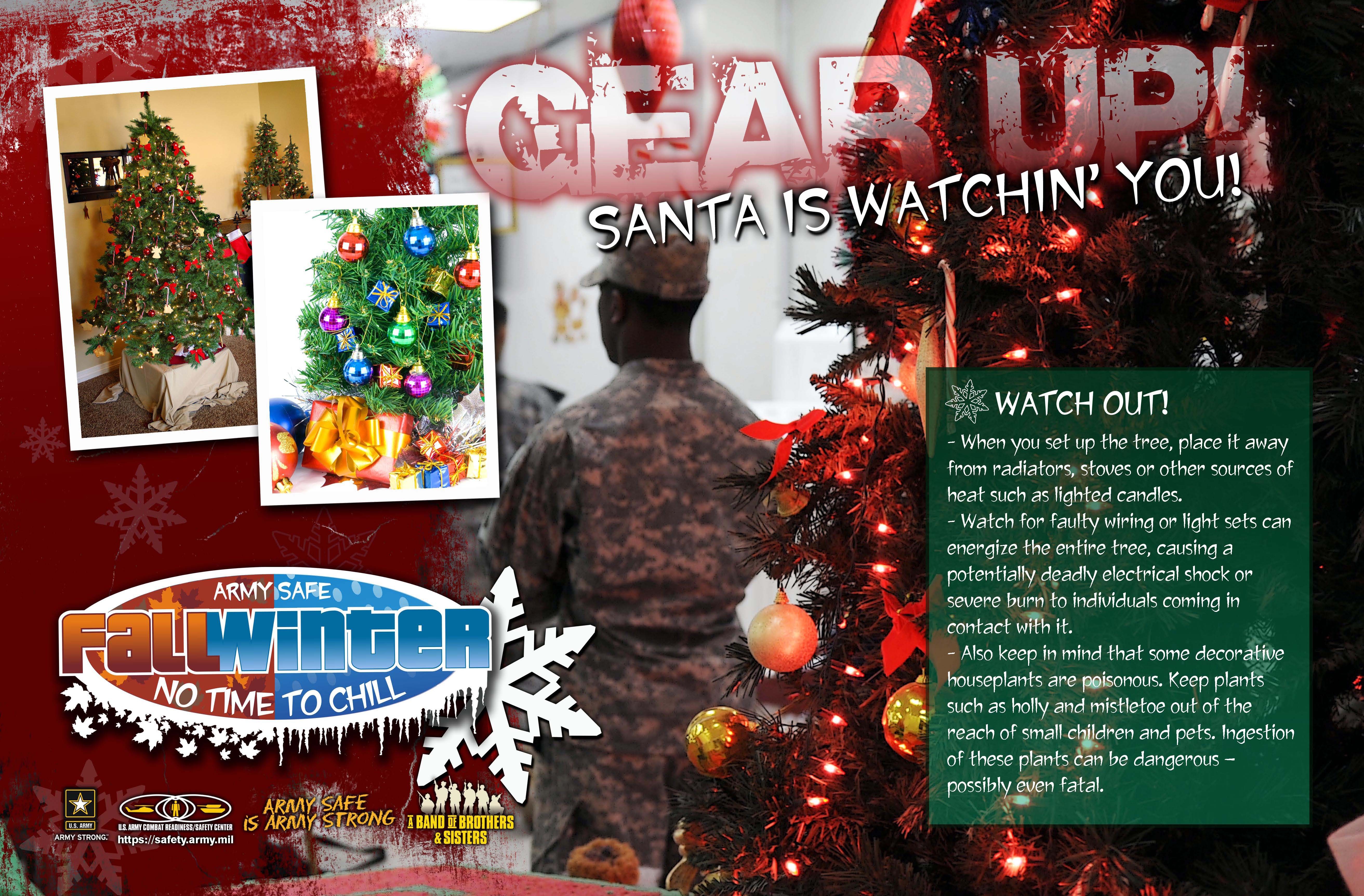There is crispness to the air these days. The kids are back in school. Football season is upon us. Autumn colors and smells are in the air, and not far behind will be the chill of winter.
As the Army family begins to gear up for autumn and winter, and for upcoming holidays and visitors, officials at the U.S. Army Combat Readiness/Safety Center are busy reminding all Soldiers, Family members and civilians that preparation and a good understanding of seasonal risks will keep everyone safe at home this year.
"Many of the same things that can be dangerous at work can be dangerous at home too," said Tracey Russell, USACR/Safety Center safety specialist. "As people get ready for the fall and winter seasons this year, I encourage everyone to use the same risk mitigation tools at home as they do at work."
Turn up the heat, turn down the risk
Officials with the Home Safety Council advise that one of the first things home owners should do as temperatures begin to cool is bring in a trained professional to inspect, clean and tune-up a home's central heating system. Any malfunctions must be repaired as soon as possible. If there is a fireplace or woodstove in the home, it should also be inspected and cleaned.
As heating units around the country kick into high gear, the threat of a "silent killer" grows substantially. Carbon monoxide is a colorless, odorless gas produced by fuel-burning equipment that claims the lives of nearly 300 people in their homes each year according to the U.S. Consumer Product Safety Commission.
"Carbon monoxide is deadly," Russell said, noting a Soldier and his wife died as the result of carbon monoxide poisoning last year. "Every home, regardless of its age, must have at least one carbon monoxide detector."
To further mitigate the risk of carbon monoxide poisoning, Home Safety Council officials recommend keeping gas appliances properly adjusted and serviced; never using an oven or range as a heating alternative; never using a gas or charcoal grill inside your home or in a closed garage; having heating systems and fireplaces inspected annually; and never operate gasoline-powered equipment like generators in an enclosed garage or other indoor space.
Friends, Family and blizzards, oh my!
As autumn slowly slips into the winter months, preparations for severe weather and holiday gatherings take center stage.
To ensure severe weather readiness, all homeowners must be "ready-to-go" or "ready-to-stay" should the power go out in the home. The Home Safety Council encourages residents to stock up on batteries, flashlights (not candles), and portable radios far in advance of the first snow or ice storm. The council also advises homeowners stock up on canned foods, manual can openers, bottled water and plenty of warm blankets.
Winter is not winter without holiday celebrations. Christmas, Hanukah, New Years and Valentine's Day are all holidays during which many decorate their homes and look forward to visits from family and friends.
Before guests arrive, homeowners should take precautions to prevent accidental slips, trips or falls. According to the Home Safety Council, ensure that lights in stairways, hallways, porches, and entry areas all be in working order and bright enough. It is also helpful to all home occupants to have non-slip strips or rubber mats in all tubs and shower stalls. Nightlights are always a nice gesture for guests so to ensure a safe nighttime bathroom trip, add a few nightlights to bathrooms or hallways leading to a bathroom. If guests will be bringing babies or toddlers, make a few baby-safe improvements to the house. Put safety gates in stairwells and ensure that the irreplaceable, expensive decorative items are kept far from curious hands.
Decorating sense
Decorating the holiday tree is a traditional and much anticipated event in most homes but if your prized "Charlie Brown" tree is not properly cared for, dangers abound!
When selecting a live tree, look at the needles to ensure they are not brown and do not break easily. Test the tree by bending a few needles in half. If they snap in two, the tree is dry and is not right tree for the house.
When the tree has made its grand entrance into the home, it should be put in a sturdy, no-tip stand, filled with water. Frequently check the stand to ensure the tree always has plenty of water as a dried-out tree is a huge fire hazard. Make sure the tree is at least three feet away from a heat source and never put candles on the tree, nor use candles near the tree.
When decorating indoors, always use lights for indoor use. When decorating outdoors, always use lights for outdoor use. Unplug all lights, inside and outside, before going to bed or leaving home.
A safe home is a happy home and a happy home during fall football parties and winter holiday celebrations is priceless. For more information about seasonal safety, visit https://safety.army.mil and click on the Fall/Winter Safety Campaign logo located at the bottom of the page.


Social Sharing